Whether you call them over easy eggs or eggs over easy, I have the definitive way to make the best-fried egg over easy. I break down the best pan for cooking, what fat to use, and step-by-step instructions to ensure firm egg whites and a gorgeous creamy yolk. Plus I am going to show my secret to indirect cooking that will ensure the best yolk texture.
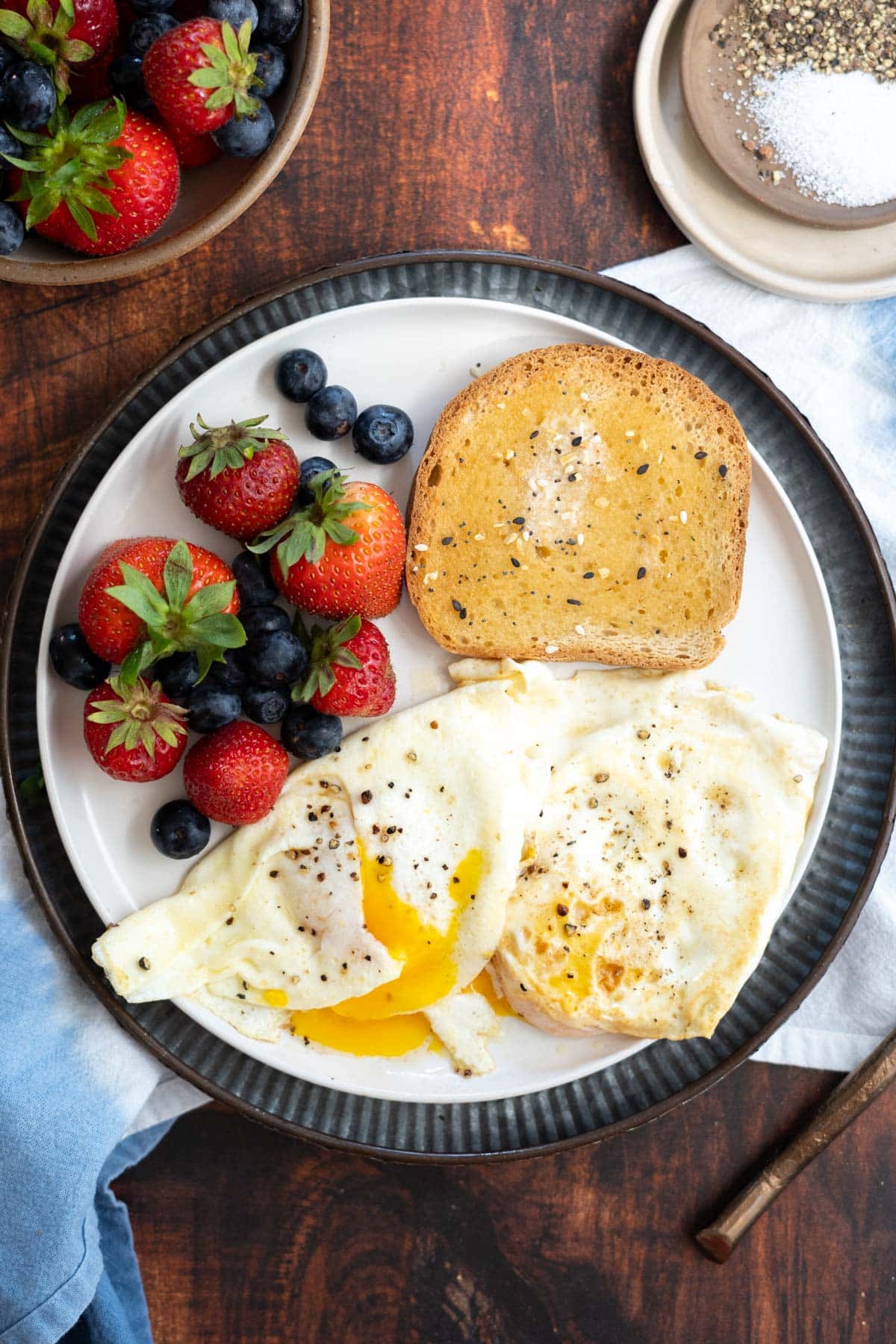
This post may include affiliate links. Please read my disclosure policy.
I have been working on a series on how to cook eggs. My favorite breakfast food by far. And eggs cooked over easy is my favorite.
Perfect for dipping in toast or a buttermilk biscuit. Just pair it with a blueberry smoothie and you are good to go!
Jump to:
🧾Ingredient Notes
Use the freshest eggs possible. The yolk will be more defined and less likely to break. This is the opposite of my baking recipes where I like to use older eggs.
Egg Grades
When selecting eggs, you'll usually find three grades: Grade AA, Grade A, and Grade B. Grade B is usually not found at grocery stores which leaves us with a choice between AA and A.
I prefer to use AA large eggs for frying eggs, while Grade A is totally fine for baking or your favorite scrambled egg recipe where the definition between the white and the yolk isn't as critical.
But I promise, whichever egg type you use we are going to get you a perfectly cooked egg.
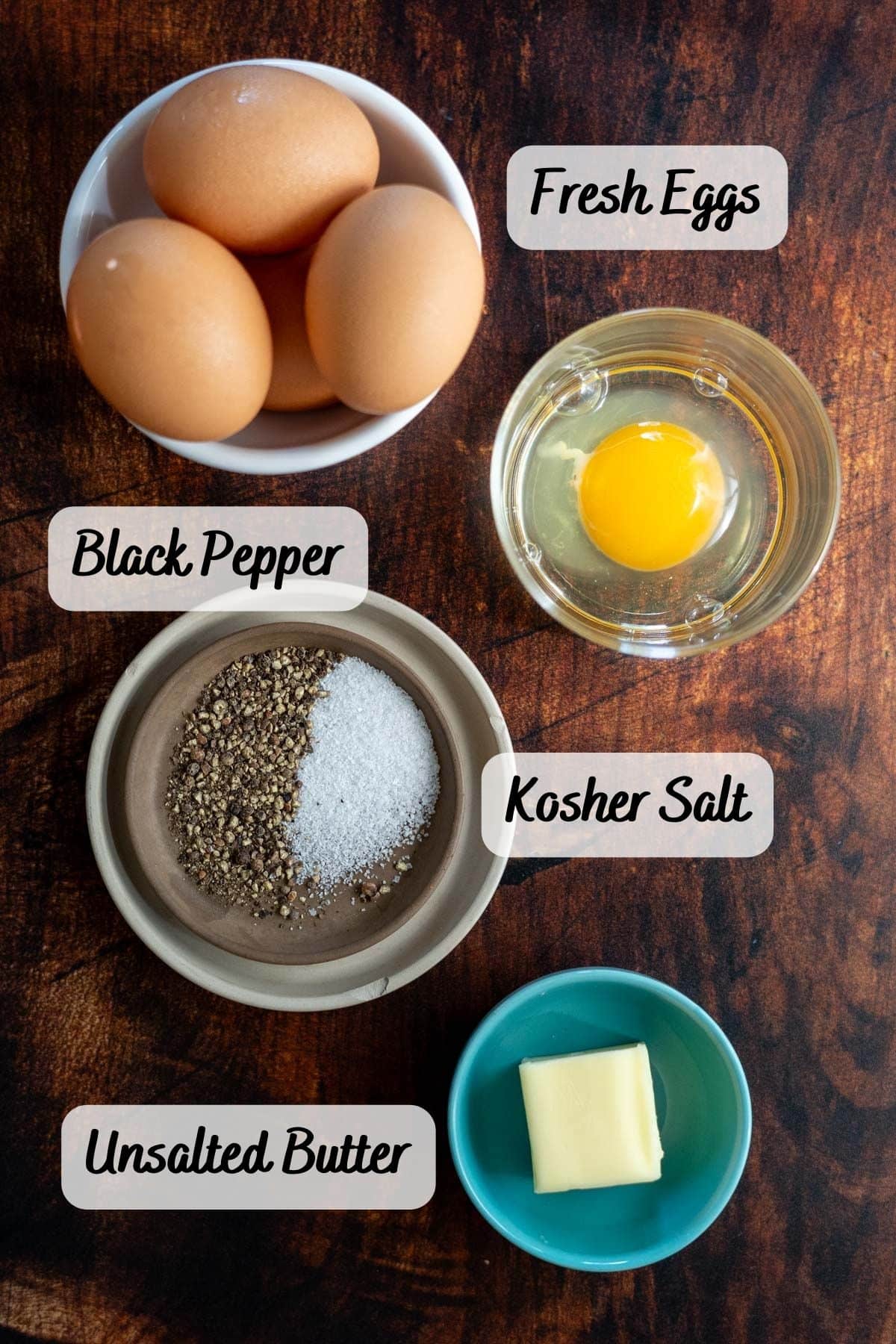
Should You Use Oil, Butter, or Bacon Grease?
The best choice for frying eggs is butter. As you heat the butter it will brown slightly giving the eggs a richer nutty flavor. In addition to adding more flavor than oil, it provides a lovely texture for the egg whites.
However, if you prefer an extra crispy white try olive oil or avocado oil. For a dairy-free and vegan option, try unsalted vegan butter.
Bacon grease is also an option. While it offers convenience if you are making bacon, it can impart a stronger flavor. I use bacon grease on a case-by-case basis and only if it pairs well with the rest of my breakfast.
What is the Best Pan for Making Over Easy Eggs?
The right pan is the key to not breaking the egg yolks. My preference is a nonstick skillet. It is ideal for making over easy eggs, as it prevents sticking and makes flipping a breeze. Plus clean up is easier.
You can use a cast-iron skillet but it needs to be well seasoned and I find takes more butter or oil to prevent sticking. A fish spatula is a perfect tool for flipping if you're using cast iron. It is more flexible than a traditional spatula and won't break the delicate yolks.
A stainless steel pan will work but you may need to add up to 2x the amount of butter to get the perfect eggs.
⏲️How to Make Eggs Over Easy
Making eggs over easy only takes 5 minutes. The biggest problem is, people make it complicated.
Step 1- Melt the Butter
Start by adding the butter to a cold pan and warming it over medium-low heat. Use plenty of butter to prevent sticking. The pan is ready when the melted butter is slightly foamy.
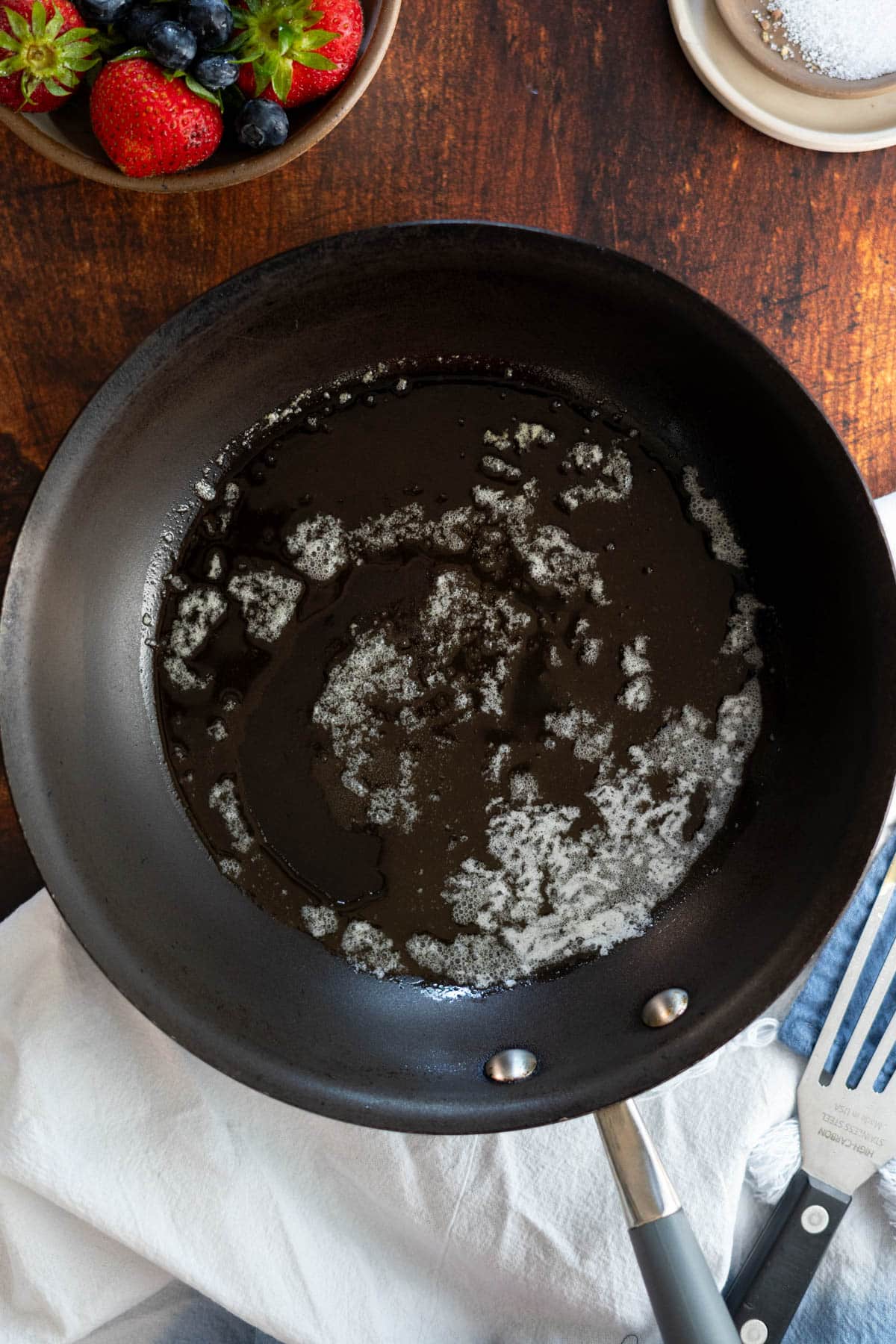
Step 2- Add the Eggs
Crack open the egg and add to the hot pan. My preference is to do this in a small bowl and then slide the egg into the pan.
Resist any urge to move it around. Simply sprinkle it with a little salt and pepper.
When the whites of the eggs begin to set and the edges of the eggs just begin to furl up, it is time to flip.
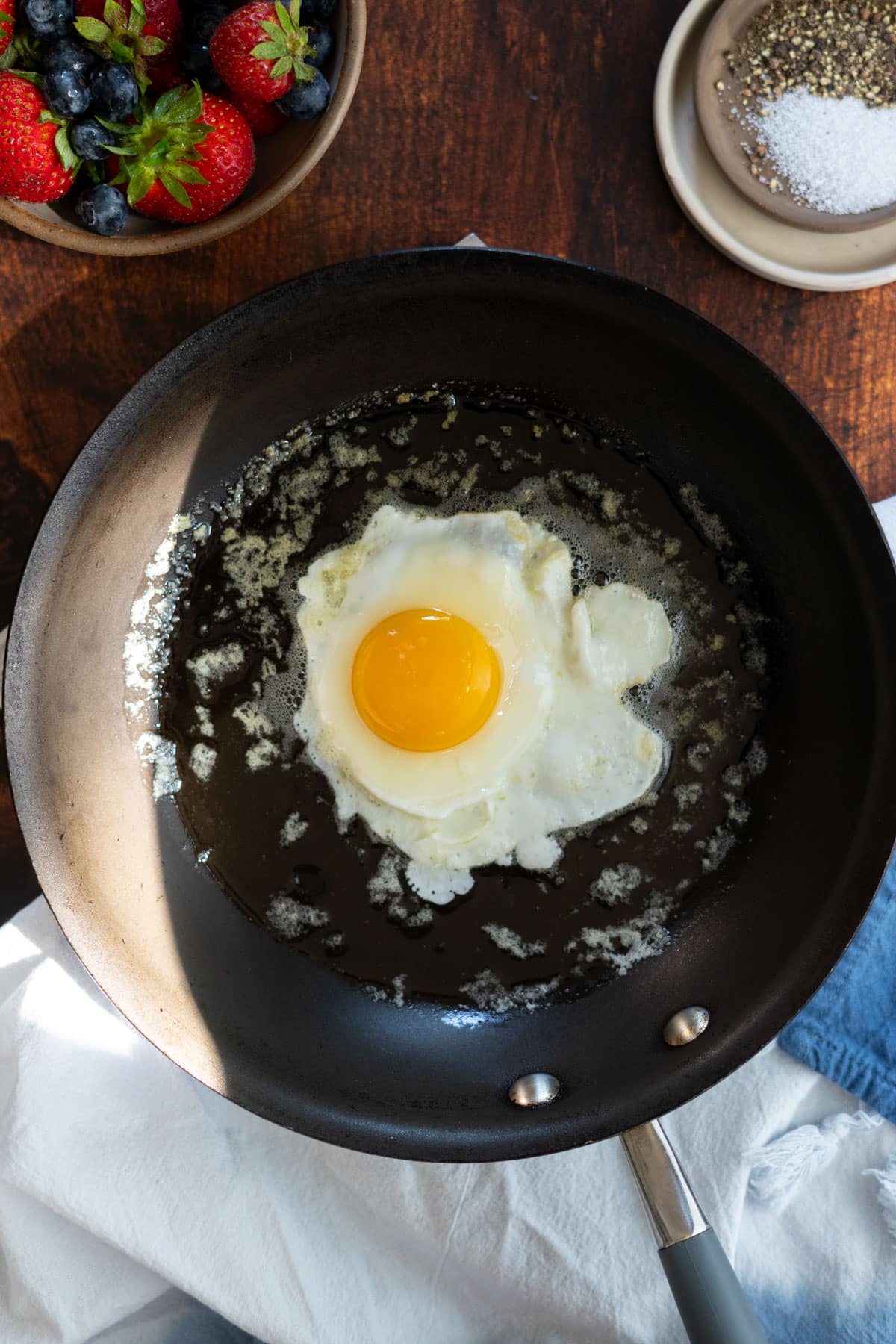
Step 3- Remove from Heat
This is where my technique diverges from common practice. As soon as you flip the egg, remove the pan from direct heat. The residual heat will fully cook the egg white but you don't run the risk of overcooking the yolk.
Season the second side and serve!
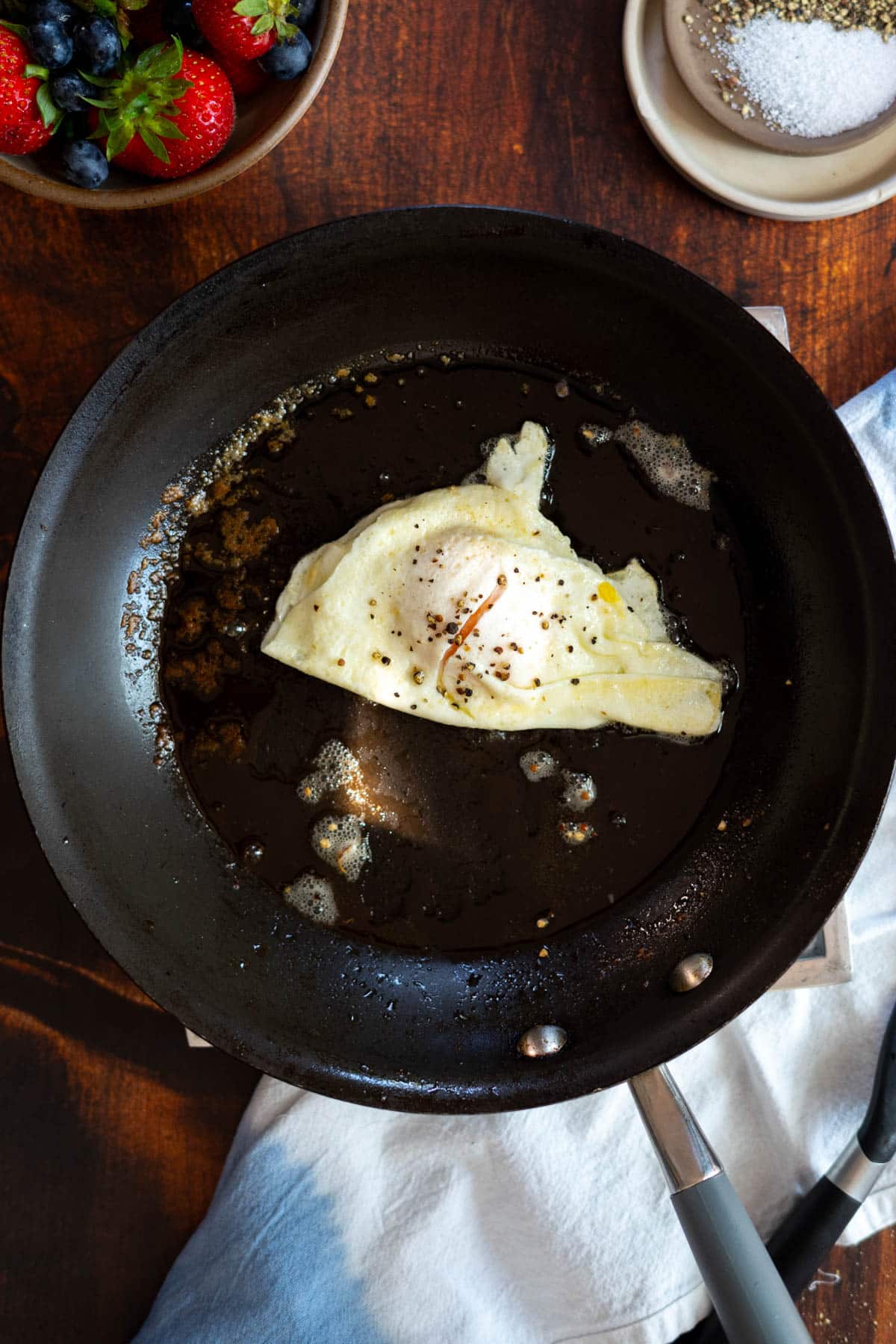
🥗How to Serve Over Easy Eggs
Over easy eggs can be part of a simple breakfast or...
- Put on top of avocado toast and serve with a tropical fruit salad
- Add on top of a cheeseburger
- Serve on leftover rice or roasted potatoes with chili oil
- Add to a breakfast sandwich and let the runny soft yolk become a dipping sauce
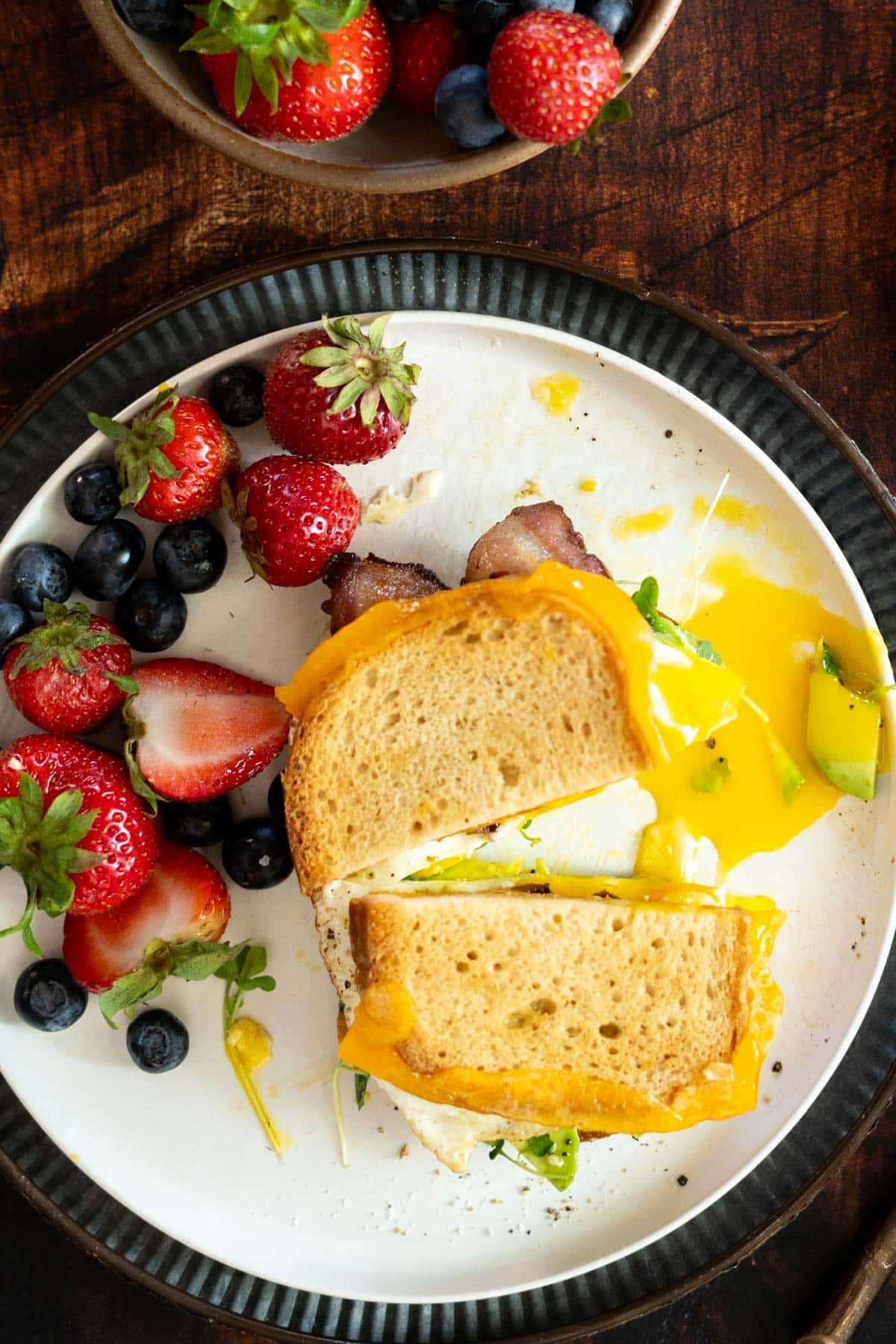
👩🏻🍳 Expert Tips
- Use fresh eggs!
- For beginners, it's best to start with one egg at a time until you get the hang of flipping.
- Thoroughly heat your pan and melt your butter. A hot pan will keep the egg whites together the prevent the eggs from running together.
- If you are using oil or grease you can test for a hot pan by flicking a TINY amount of water and seeing if it sizzles.
- To avoid breaking the yolk, crack the eggs into a small dish and then slide them into the pan.
- If you are using salted butter skip salting the eggs.
- Don't be afraid to play with the seasoning! Sprinkle some salt, pepper, or your favorite herbs for added flavor. I like a cajun seasoning for a little spice.
🌡️Storing Leftovers
Over-easy eggs are best enjoyed immediately. If you have leftovers, store them in an airtight container in the refrigerator and consume them within 2-3 days.
I like to reheat them in the microwave, but they will come out as medium-cooked eggs.
More Egg Recipes
Frequently Asked Questions
The main difference is the cooking method. Sunny-side-up eggs are only cooked on one side, while over-easy eggs are flipped and cooked briefly on both sides.
Yes, over-easy eggs are safe to eat if you use high-quality eggs and fully-cooked egg whites. However, you want to skip the runny yolks if you are pregnant or immunocompromised.
Did You Enjoy Making This Recipe? Please rate this recipe with ⭐⭐⭐⭐⭐ or leave a comment. It helps other wonderful people connect with my food.
📖 Recipe Card
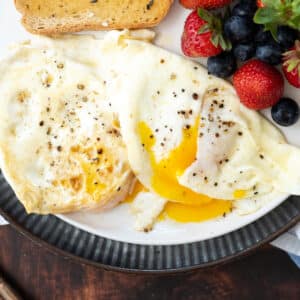
Over Easy Eggs
Ingredients
- 1 Tablespoon unsalted butter or other cooking oil or bacon grease
- 2 eggs
- kosher salt
- black pepper
Instructions
- Heat a non-stick skillet or frying pan over medium-low heat. Add the butter allow it to melt and coat the surface. Do not skimp and use at least a full tablespoon per batch.1 Tablespoon unsalted butter
- When the butter begins to foam, crack the eggs into the pan, being careful not to break the yolks. Sprinkle with salt and pepper.2 eggs, kosher salt, black pepper
- Cook for 2 minutes or until the egg whites start to set and become opaque but the yolk is still runny. The edges may start to look crispy.
- Carefully flip each egg using a spatula. Remove the pan from direct heat and let the eggs sit for 1 minute. Serve immediately.
Notes
- Crack the eggs into a small bowl or ramekin and gently pour into the hot pan.
- The residual heat from the pan will fully cook the egg white while ensuring you don't accidentally overcook the egg.
Equipment
- Fish spatula a thin spatula perfect for filppng eggs!



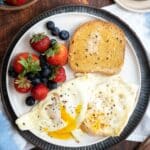
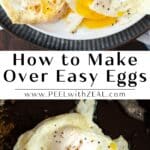
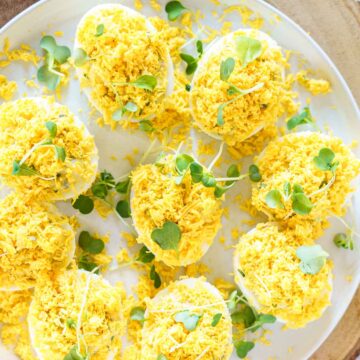
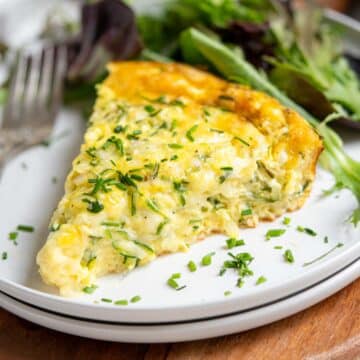
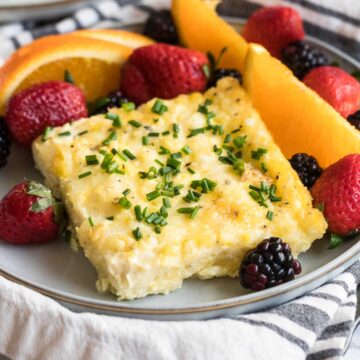
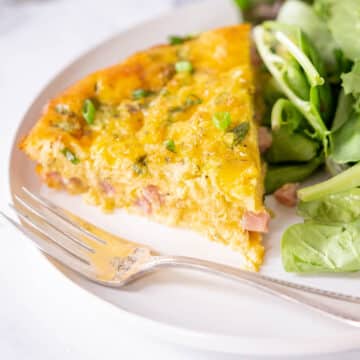
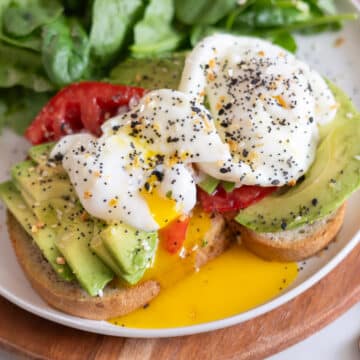
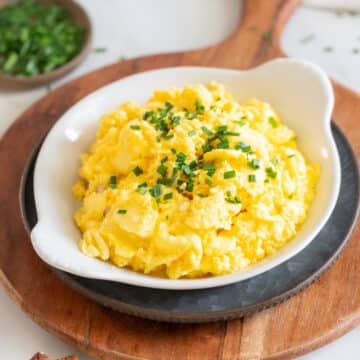
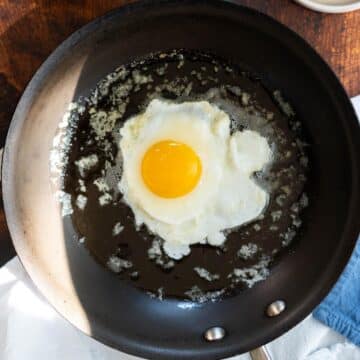
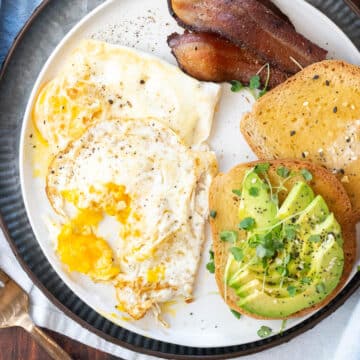
Comments
No Comments